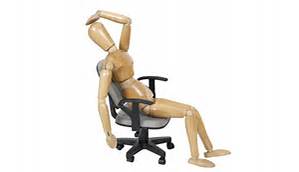What we see on the outside is not necessarily the whole picture. Both as a personal trainer and a coach, I know this well. The picture very rarely tells the whole story. Here are two people who lead successful and happy lives—at least when you see them from the outside. But they are also suffering some of the consequences of carrying around a lot of weight. They are relatively young people and it is really a shame that this is impeding the quality of those lives.
Paula
Paula has a hectic life. She runs a successful business, she’s a mother, and she is often invited to social gatherings. In her line of work, Paula is on her feet for much of the day. But Paula is obese. Her BMI is over 40 and that means that all of that standing takes a large toll on her lower body and wears her out by the end of each day. Paula is fairly fit and she works out with a trainer twice a week. Yet, walking around all day with that much extra weight impacts Paula’s ability to enjoy life.
Molly
Molly is retired from her profession, but she is still a busy lady. Molly is a mother, helps with several charity projects, helps her husband in his business, and travels a lot. Molly not only works out with me, but she also does water aerobics and Pilates independently. However, she isn’t a very active person other than her formal exercise programs, and she too carries way to much weight. Her BMI is in the 40’s. As we all know, a BMI above 30 is already dangerous.
High BMI
A body mass index of above 30, and certainly above 40, usually indicates that at some point a person will suffer some negative health consequence. Those consequences can be heart disease, type 2 diabetes, sleep apnea, cancer, fatty liver disease, digestive problems and a shortened life span. But right now, we are concentrating on how being overweight or obese can have a negative influence on our quality of life.
Quality of life
Paula told me about one evening where after a long day at her business, she arrived at the wedding hall to attend the wedding she was invited to. There was a cocktail hour and people were standing around, helping themselves to food and socializing. But Paula was only concentrating on one thing—why aren’t there more chairs for people to sit down? After standing much of the day in her store and carrying so much weight, she was too uncomfortable to stand and speak to friends. Because she carries so much weight, a very normal activity became very difficult. Paula lost her ability to converse with her friends. What should have, and could have been a wonderful evening, turned into only hoping the Chupah would take place soon so she could be seated at her table.

Molly is the ultimate host. Every Shabbat many, many guests come to her home. People even feel comfortable to invite themselves. As a result, she can be on her feet cooking starting on Wednesday. By the time Molly finishes cleaning up after Shabbat, she is wiped. Why? Besides working very hard she is carrying a lot of extra weight.
Eating well and staying active
Both Molly and Paula try to eat healthy foods, but they are not conscious of portions. Another issue is their lack of non-exercise activity. Neither one does much walking from place to place or stays active otherwise.
At this point, Paula and Molly don’t have any of the adult diseases that can result from obesity. Unfortunately, they are rapidly losing function.
Losing function and obesity
Due to the aging population, the burden of arthritis and musculoskeletal conditions as causes of pain and disability continues to increase. In Australia, these conditions are the third largest contributor to direct health expenditure (behind cardiovascular disease and neurological disorders).
There is a significant, direct association between musculoskeletal disorders and one’s level of obesity. The Centre for Disease Control recently reported that in the United States, more than 31% of obese adults were also diagnosed with arthritis.
The extent of the problem of obesity in relation to muscular-skeletal disease and discomfort is not yet well recognized. In addition, the chronic pain and disability associated with musculoskeletal conditions often results a sedentary lifestyle which can lead to diseases like heart disease and diabetes. Obesity is also associated with increased risks in the surgical management of some of these musculoskeletal conditions.
Lessen the burden
When I give my introduction to weight loss for my 10 Week to Health clients, we review the list of diseases that result from being overweight or obese. Even with great genes to combat all the adult illnesses, osteoarthritis and general discomfort can still surface.
Paula and Molly are doing themselves a lot of good by exercising. They must start taking their weight loss seriously, or their quality of life will continue to be a challenge. I have seen many people turn their situation around and lose a lot of weight. Every kilo counts. When you lose 4 or 5 kilo, you will notice a significant difference in how much better you feel.
One kilo of weight is 4 kilograms of pressure on the lower body. This impacts your feet, knees, hips and back. So when you lose one kilo, you just took 4 kilo of pressure off you lower extremities.
It’s tough stuff to lose weight. It needs to be done correctly, methodically, and without doing something radical. Eating healthy food in normal size portions in conjunction with exercise can go a long way. Losing weight will bring you enjoyment and a better quality of life and will “add hours to your day, days to your year, and years to your life.”

Leave A Comment